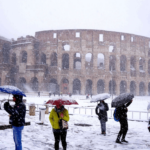Trip Planning and Organization
Effective trip planning begins well in advance of departure. Start by researching your destination, including weather conditions during your travel dates. This information will guide your packing decisions for appropriate clothing and gear.
Consider the activities planned for your trip, as these will influence your packing requirements. Create a comprehensive packing list to ensure all necessary items are included. This list should cover clothing, toiletries, travel documents, electronics, and any special items such as medications.
Efficient packing can be achieved by planning outfits for each day of your trip. Focus on versatile clothing items that can be mixed and matched to create multiple looks. Ensure appropriate footwear is packed for all planned activities.
Include essential travel documents such as passports, visas, tickets, and insurance information. Don’t forget to pack chargers and adapters for electronic devices. By organizing and planning thoroughly in advance, you can minimize stress and ensure a smooth travel experience.
A well-prepared traveler is better equipped to handle unexpected situations and fully enjoy their trip.
Key Takeaways
- Start by creating a detailed packing list and organizing your items based on the length and purpose of your trip.
- Consider the duration and activities of your trip when choosing the right luggage, whether it’s a backpack, suitcase, or duffel bag.
- Pack versatile clothing and accessories that can be mixed and matched for different outfits and occasions.
- Use packing cubes, compression bags, and rolling techniques to maximize space and keep your items organized in your luggage.
- Pack multi-purpose items such as a sarong, a reusable water bottle, and a travel towel to save space and be prepared for various situations during your trip.
- Tailor your packing based on specific activities such as hiking, beach vacations, or city sightseeing, and pack accordingly.
- Use travel organizers, pouches, and compartments to keep your belongings organized and easily accessible during your trip.
Choosing the Right Luggage
When it comes to choosing the right luggage for your trip, it’s important to consider the length of your trip, the type of activities you’ll be doing, and the mode of transportation you’ll be using. For shorter trips or weekend getaways, a carry-on suitcase or a duffel bag may be sufficient. These smaller bags are convenient for quick trips and can easily fit in overhead compartments on planes or in the trunk of a car.
If you’ll be traveling for an extended period or participating in activities that require specialized gear, a larger suitcase or a backpack with multiple compartments may be more suitable. In addition to considering the size of your luggage, it’s important to think about the material and durability of the bag. For frequent travelers or those embarking on adventurous trips, a durable and water-resistant bag is essential to protect your belongings.
Look for luggage with sturdy zippers, reinforced corners, and ergonomic handles for easy maneuverability. Finally, consider any additional features that may be important to you, such as built-in locks, expandable compartments, or removable straps. By choosing the right luggage for your specific needs, you can ensure that your belongings are safe and secure throughout your journey.
When it comes to choosing the right luggage for your trip, it’s important to consider the length of your trip, the type of activities you’ll be doing, and the mode of transportation you’ll be using. For shorter trips or weekend getaways, a carry-on suitcase or a duffel bag may be sufficient. These smaller bags are convenient for quick trips and can easily fit in overhead compartments on planes or in the trunk of a car.
If you’ll be traveling for an extended period or participating in activities that require specialized gear, a larger suitcase or a backpack with multiple compartments may be more suitable. In addition to considering the size of your luggage, it’s important to think about the material and durability of the bag. For frequent travelers or those embarking on adventurous trips, a durable and water-resistant bag is essential to protect your belongings.
Look for luggage with sturdy zippers, reinforced corners, and ergonomic handles for easy maneuverability. Finally, consider any additional features that may be important to you, such as built-in locks, expandable compartments, or removable straps. By choosing the right luggage for your specific needs, you can ensure that your belongings are safe and secure throughout your journey.
Packing Essentials

When it comes to packing essentials for a trip, it’s important to focus on versatile and practical items that will serve multiple purposes. Start by packing clothing that can be mixed and matched to create different outfits, taking into account the weather conditions at your destination. Consider packing lightweight layers that can be easily added or removed as needed.
In addition to clothing, don’t forget to pack essential toiletries such as toothpaste, shampoo, and sunscreen in travel-sized containers to save space. Another essential item to pack is a first aid kit with basic medical supplies such as bandages, pain relievers, and antiseptic wipes. This is especially important if you’ll be participating in outdoor activities or traveling to remote areas where medical assistance may not be readily available.
Additionally, be sure to pack any necessary electronics such as chargers, adapters, and power banks to keep your devices powered throughout your trip. By focusing on packing versatile clothing, essential toiletries, and practical items such as a first aid kit and electronics, you can ensure that you have everything you need for a comfortable and enjoyable trip. When it comes to packing essentials for a trip, it’s important to focus on versatile and practical items that will serve multiple purposes.
Start by packing clothing that can be mixed and matched to create different outfits, taking into account the weather conditions at your destination. Consider packing lightweight layers that can be easily added or removed as needed. In addition to clothing, don’t forget to pack essential toiletries such as toothpaste, shampoo, and sunscreen in travel-sized containers to save space.
Another essential item to pack is a first aid kit with basic medical supplies such as bandages, pain relievers, and antiseptic wipes. This is especially important if you’ll be participating in outdoor activities or traveling to remote areas where medical assistance may not be readily available. Additionally, be sure to pack any necessary electronics such as chargers, adapters, and power banks to keep your devices powered throughout your trip.
By focusing on packing versatile clothing, essential toiletries, and practical items such as a first aid kit and electronics, you can ensure that you have everything you need for a comfortable and enjoyable trip.
Maximizing Space
| Strategy | Benefits |
|---|---|
| Utilizing vertical space | Maximizes storage capacity |
| Implementing multi-functional furniture | Optimizes functionality in limited space |
| Organizing and decluttering regularly | Creates a sense of spaciousness |
| Using light colors and mirrors | Enhances the perception of space |
Maximizing space when packing for a trip is essential for staying organized and avoiding overpacking. One way to maximize space is by using packing cubes or compression bags to condense clothing and other items. These handy organizers not only save space but also help keep your belongings neatly organized within your luggage.
Another space-saving tip is to roll clothing instead of folding it, which not only saves space but also minimizes wrinkles. Additionally, consider wearing bulkier items such as jackets or boots while traveling to free up space in your luggage. Utilize every inch of space within your luggage by filling shoes with socks or small items and tucking underwear into empty spaces within your bag.
Finally, consider investing in travel-sized toiletries or reusable containers to minimize the amount of space they take up in your luggage. By maximizing space through the use of packing organizers, efficient packing techniques, and strategic use of available space within your luggage, you can pack everything you need without feeling weighed down by bulky bags. Maximizing space when packing for a trip is essential for staying organized and avoiding overpacking.
One way to maximize space is by using packing cubes or compression bags to condense clothing and other items. These handy organizers not only save space but also help keep your belongings neatly organized within your luggage. Another space-saving tip is to roll clothing instead of folding it, which not only saves space but also minimizes wrinkles.
Additionally, consider wearing bulkier items such as jackets or boots while traveling to free up space in your luggage. Utilize every inch of space within your luggage by filling shoes with socks or small items and tucking underwear into empty spaces within your bag. Finally, consider investing in travel-sized toiletries or reusable containers to minimize the amount of space they take up in your luggage.
By maximizing space through the use of packing organizers, efficient packing techniques, and strategic use of available space within your luggage, you can pack everything you need without feeling weighed down by bulky bags.
Multi-Purpose Items
When packing for a trip, it’s helpful to include multi-purpose items that can serve multiple functions and save space in your luggage. One example of a multi-purpose item is a sarong or large scarf that can be used as a beach cover-up, picnic blanket, or even a makeshift towel in a pinch. Another multi-purpose item is a lightweight shawl or pashmina that can double as a blanket on chilly flights or evenings out.
Consider packing versatile footwear such as sandals that can be dressed up or down for different occasions or activities. Additionally, bring along a reusable water bottle that can be refilled throughout your trip to stay hydrated while reducing waste from single-use plastic bottles. Finally, consider packing a small backpack or tote bag that can serve as an extra carry-on during flights or as a day bag for exploring your destination.
By including multi-purpose items in your packing list, you can save space in your luggage while ensuring that you have everything you need for various activities during your trip. When packing for a trip, it’s helpful to include multi-purpose items that can serve multiple functions and save space in your luggage. One example of a multi-purpose item is a sarong or large scarf that can be used as a beach cover-up, picnic blanket, or even a makeshift towel in a pinch.
Another multi-purpose item is a lightweight shawl or pashmina that can double as a blanket on chilly flights or evenings out. Consider packing versatile footwear such as sandals that can be dressed up or down for different occasions or activities. Additionally, bring along a reusable water bottle that can be refilled throughout your trip to stay hydrated while reducing waste from single-use plastic bottles.
Finally, consider packing a small backpack or tote bag that can serve as an extra carry-on during flights or as a day bag for exploring your destination. By including multi-purpose items in your packing list, you can save space in your luggage while ensuring that you have everything you need for various activities during your trip.
Packing Tips for Specific Activities

When packing for specific activities such as hiking or beach outings, it’s important to consider the specialized gear and clothing needed for each activity. For hiking trips, pack moisture-wicking clothing layers, sturdy hiking boots with good traction, a lightweight backpack with hydration system compatibility, and essential gear such as a map, compass, and first aid kit. Additionally, consider bringing along trekking poles for added stability on challenging terrain.
For beach outings, pack essentials such as sunscreen with high SPF protection, sunglasses with UV protection, a wide-brimmed hat for sun protection, and a beach towel or blanket for lounging on the sand. Don’t forget to bring along swimwear and water shoes if needed for water activities such as snorkeling or kayaking. By tailoring your packing list to specific activities, you can ensure that you have everything you need for a safe and enjoyable experience.
When packing for specific activities such as hiking or beach outings, it’s important to consider the specialized gear and clothing needed for each activity. For hiking trips, pack moisture-wicking clothing layers, sturdy hiking boots with good traction, a lightweight backpack with hydration system compatibility, and essential gear such as a map, compass, and first aid kit. Additionally, consider bringing along trekking poles for added stability on challenging terrain.
For beach outings, pack essentials such as sunscreen with high SPF protection, sunglasses with UV protection, a wide-brimmed hat for sun protection, and a beach towel or blanket for lounging on the sand. Don’t forget to bring along swimwear and water shoes if needed for water activities such as snorkeling or kayaking. By tailoring your packing list to specific activities, you can ensure that you have everything you need for a safe and enjoyable experience.
Staying Organized During the Trip
Staying organized during a trip is essential for easy access to belongings and efficient packing when moving between accommodations. One way to stay organized is by using packing cubes or pouches within your luggage to separate different types of items such as clothing, toiletries, and accessories. This not only keeps everything neatly organized but also makes it easier to find specific items without having to unpack everything.
Another tip for staying organized is to designate specific compartments within your luggage for different types of items such as shoes or dirty laundry. This helps prevent items from getting mixed up and makes it easier to keep track of everything throughout your trip. Additionally, consider using travel organizers such as jewelry rolls or toiletry bags to keep smaller items secure and easily accessible within your luggage.
By staying organized throughout your trip, you can minimize stress and maximize enjoyment during your travels. Staying organized during a trip is essential for easy access to belongings and efficient packing when moving between accommodations. One way to stay organized is by using packing cubes or pouches within your luggage to separate different types of items such as clothing, toiletries, and accessories.
This not only keeps everything neatly organized but also makes it easier to find specific items without having to unpack everything. Another tip for staying organized is to designate specific compartments within your luggage for different types of items such as shoes or dirty laundry. This helps prevent items from getting mixed up and makes it easier to keep track of everything throughout your trip.
Additionally, consider using travel organizers such as jewelry rolls or toiletry bags to keep smaller items secure and easily accessible within your luggage. By staying organized throughout your trip, you can minimize stress and maximize enjoyment during your travels. In conclusion…
Planning and organizing are key components of successful travel preparation; choosing the right luggage ensures that all necessary items are accommodated; packing essentials involves considering versatile clothing options; maximizing space allows travelers room for souvenirs; multi-purpose items save room while providing various uses; specific activities require tailored packing lists; staying organized during travel ensures easy access when needed.
If you’re looking for more tips on how to pack light for a two-week trip, check out this article on Rome Retreats’ website. They offer great advice on how to streamline your packing process and make the most of your luggage space. https://www.romeretreats.com/
FAQs
What are the benefits of packing light for a two-week trip?
Packing light for a two-week trip can make traveling more convenient and comfortable. It allows for easier mobility, reduces the risk of overpacking, and can save on baggage fees. Additionally, it can make navigating through airports, train stations, and other transportation hubs much easier.
How do I decide what to pack for a two-week trip?
When deciding what to pack for a two-week trip, consider the climate and activities you’ll be engaging in. Choose versatile clothing items that can be mixed and matched, and opt for lightweight and quick-drying fabrics. Make a list of essentials such as toiletries, medications, and travel documents to ensure you don’t forget anything important.
What are some tips for packing light for a two-week trip?
Some tips for packing light for a two-week trip include rolling clothes to save space, using packing cubes to organize and compress clothing, and choosing multi-purpose items such as a scarf that can double as a shawl or a beach towel. It’s also important to limit the number of shoes and accessories you bring and to consider doing laundry during your trip if necessary.
How can I maximize space in my luggage when packing for a two-week trip?
To maximize space in your luggage when packing for a two-week trip, consider using compression bags for bulky items such as sweaters or jackets. Utilize every inch of space by filling shoes with socks or small items, and tuck small items into any gaps or pockets within your luggage. Consider investing in travel-sized toiletries and minimizing the number of electronics and gadgets you bring.
What are some common mistakes to avoid when packing for a two-week trip?
Common mistakes to avoid when packing for a two-week trip include overpacking by bringing too many clothing options, not considering the climate or local customs, and packing items that can easily be purchased at your destination. It’s also important to avoid bringing bulky or heavy items that can weigh you down and take up valuable space in your luggage.









